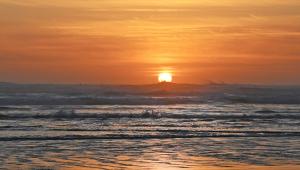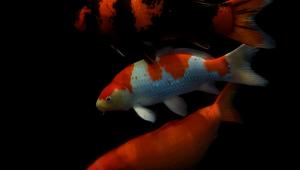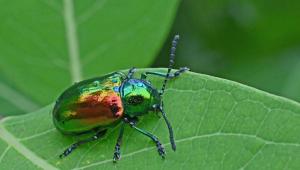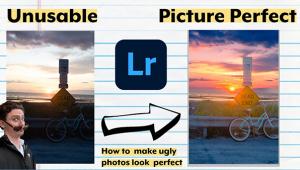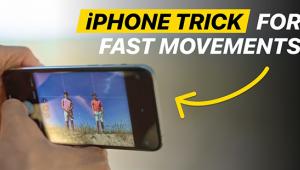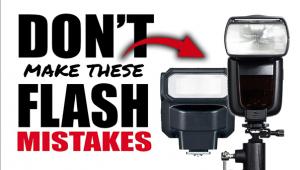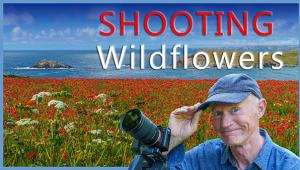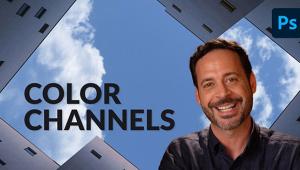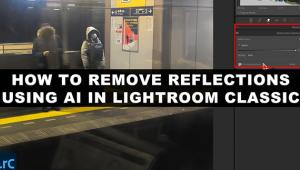Digital Help
Q&A For Digital Photography
Digital Help is designed to aid you in getting the most from your digital photography, printing, scanning, and image creation. Each month, David Brooks provides solutions to problems you might encounter with matters such as color calibration and management, digital printer and scanner settings, and working with digital photographic images with many different kinds of cameras and software. All questions sent to him will be answered with the most appropriate information he can access and provide. However, not all questions and answers will appear in this department. Readers can send questions to David Brooks addressed to Shutterbug magazine, through the Shutterbug website (www.shutterbug.com), directly via e-mail to: editorial@shutterbug.com or goofotografx@gmail.com or by US Mail to: David Brooks, PO Box 2830, Lompoc, CA 93438.
LCD Display Choices And Quality Graphic Applications
Q. I am searching for a display that I can use for photo work. I am in the advanced
amateur class of photographer. I work with CS3 and have been using a ViewSonic
P815 (21") CRT monitor since most others had tiny screens. It has been
great but is starting to fail me. I would like to switch to an LCD and I don't
want to take a drop in the size of my vertical photo display. I also have a
budget. I am retired and photography is mostly something I just spend money
on, it doesn't make me much. I have seen and worked on the newer 24"
screens, but I'd have a 32" if price wasn't an object. So,
what about a display like the ViewSonic VX2835wm? It has 1920x1200 resolution
and lots of controls for calibration. B&H has them on their site with all
the specs ($750). I have compared the specs on all of the offered displays and
there isn't much difference in them (that is not to say the performance
isn't different). An alternative is the Samsung SyncMaster 275T. Same
specs but $250 more (and better?). And on the deluxe side is the Samsung SyncMaster
305T, a 30" display for $1300 that has resolution of 2560x1600.
Gregg Blomberg
A. Over the past two or so years I have been testing and reporting
on most of the LCD displays made that are specifically manufactured to the requirements
of professional graphics and photography. None of the display models you have
suggested are specifically designated by the manufacturer to be intended for
pro graphics and photography; they are displays made for general home/office
computing. Many of my test reports are available on the Shutterbug website (www.shutterbug.com)
if you would care to read them.
For your information, the LCD displays with the same 3:4 aspect ratio height
to width are the 20.1" LCDs. Many of the new models are HD format, much
wider than high and even more extreme than the 2:3 aspect ratio of a 35mm camera.
Two modestly-priced displays that are intended for pro graphics and photography
that have a 3:4 aspect ratio are the LG Electronics Flatron L2000C 20.1"
LCD and the Samsung SyncMaster 214T 21" LCD. The Samsung display does
not currently seem to be in stock anywhere, but the wider and otherwise identical
Samsung SyncMaster 244T is available.
I do not recommend ViewSonic because they are not a manufacturer of LCD displays,
just a marketing brand, and there is no way to easily identify the manufacturing
source and what the model really is. There are really very many fewer actual
manufacturers of LCDs than there are brands, and LG Electronics and Samsung
are the largest, along with, of course, Sony, and Philips in Europe.
I have had very large LCDs in for evaluation, like the Apple 30" Cinema
Display, but I did not find them any real advantage to photographic work, and
the image detail sharpness was not as good as smaller LCD screens. Just put
the smaller LCD a little closer (there is no radiation, so it's safe);
I have also found the 20.1" LCD size has the same viewing area as a 21"
CRT, and is the sharpest and finest detailed reproducer of photo images.
Transferring Large Photo Files Over The Internet
Q. I thought I'd return a favor. You were so terrific in answering my
questions about LCDs and calibration/profiling and color workflow management
that, after reading the December issue of Shutterbug and your answer to a guy
about transferring large files, I want to refer you to a terrific and simple
(and cheap) service to transfer files up to 2GB in size.
Try www.yousendit.com. It just flat out works. It has an incredibly simple interface,
is web based, so you can access it anywhere, and is completely reliable and
secure. When you upload a file, the service sends an e-mail to your intended
recipient notifying them that there is a file waiting for them to download.
If your upload gets interrupted, you can resume it simply by logging back into
the service and picking up where you left off.
Matt Snider
A. Thanks for writing and providing a heads-up about www.yousendit.com. For some strange reason since I received the transfer question and wrote my reply a lot of different options have popped up. I have found that you can go beyond the typical limits of e-mail attachments if you and your recipient subscribe (free) to Google's Gmail.
Flash Fill And White Balance
Q. Would it be better to use the existing light (e.g., daylight, fluorescent,
etc.) as the White Balance setting when using flash as fill or bounce indoors?
I have been using AWB and doing a lot of color correcting in Photoshop. My cameras
are a Canon EOS 10D and Rebel.
Jim Ahern
A. First of all, the digital camera White Balance setting
should be set to match the main light source illuminating the subject. Then,
if electronic flash is used as a fill, and it differs in color temperature from
the main source you will obtain a color mismatch. This, as you have suggested,
will be difficult to correct in Photoshop.
You should use a filter over the flash to match its fill illumination color
to the primary source, if it is other than daylight. (Determining how much filtration
and the color composition to match fluorescent would be difficult, as fluorescent
color temperature varies depending on the tubes used.) However, an even better
solution is to substitute a reflector instead of flash fill and to bounce light
into the shadows from the main source. This would help avoid an illumination
color balance mismatch.
Canon Brand Paper Confusion
Q. Recently I purchased a box of Canon Fine Art Natural printing paper. I assumed
there would be a product information and instruction sheet in the box but none
was included. Both sides of this paper look and feel the same and I'm
wondering if there is a "right" side, or if you can print on either
side. Also, I'm using it with my Canon PIXMA iP6700D printer for sepia
prints and the results are very good, but noticeably on the magenta side. Color
saturation seems to be very intense.
Is there a right side to print on and how do you tell the right side from the
wrong side? Are there any general guidelines for using this paper? As a long-time
Shutterbug subscriber, I have always valued your evaluations and advice.
John Weiss
A. The paper you describe is a Canon Professional product
intended for use with their wide-format imagePROGRAF printers. This paper is
NOT one of those recommended for the Canon PIXMA iP6700D model, so very likely
the software driver for that printer does not have a profile to match the printer
and the paper you have. In the future I would suggest going to the Canon eStore
website and purchasing one of the Canon papers specifically recommended for
use with your printer.
To answer the question about the paper you have, you can print on either side
as it is coated on both sides. Usually you can tell the printing side by feel
or surface appearance; if it's only coated on one side the paper will
curve a bit so print on the side where the edges curve toward you. This is a
very high-quality 100 percent rag content paper that will handle a large ink
load compared to less costly cellulose fiber matte papers. You would probably
obtain more accurate color and better performance if the paper were custom profiled
for use with your printer.







